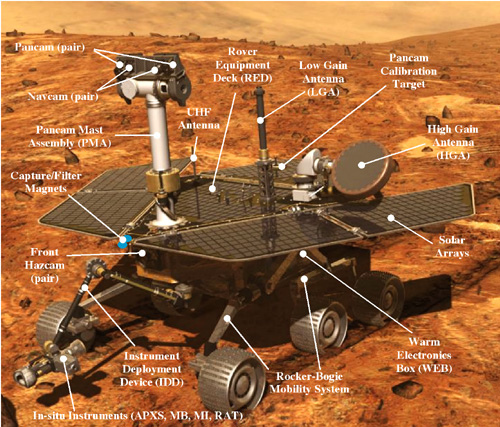 [Image: The International Space Station, courtesy of NASA, via PopSci].
[Image: The International Space Station, courtesy of NASA, via PopSci].
Space offers a quick look at the possibility that we might someday print space stations into existence in orbit.
A seemingly website-less company called Made in Space “wants to launch 3-D printers into orbit and use them to make parts for spacecraft and space stations, which would be assembled in zero gravity.” They would do this using “thin layers of ‘feedstock,’ which can be metal, plastic or a variety of other materials.” Even better, when parts break down, they’d simply be recycled back into future printed components: “Rather than shuttling a replacement part from Earth to a space station, 3-D printers aboard the station could simply crank out whatever’s needed. And the broken part could be recycled into feedstock.”
Of course, this is not entirely different from earlier visions of using radically exported 3-D printers to construct bases in situ on the moon’s dusty surface (using “lunar concrete“)—albeit, here, there is even less gravity to work with and a much more urgent need to plan for the availability of future construction material.
As it happens, a few years ago I was speaking with a concept artist who had worked on some of the earliest (and eventually unused) design proposals for Avatar; these included, he explained, plans for elaborate 3-D printers that would be used by the military in order to establish a rapid forward-operating base architecture on that alien world.
In a way, though, this is simply the microgravitational realization of BLDGBLOG’s earlier proposal for permanently installing 3-D printers inside perpetually incomplete works of architecture so that they can self-expand and internally reorganize over time.
 [Image: Mars rover and its gadgets, courtesy of NASA].
[Image: Mars rover and its gadgets, courtesy of NASA].
This would seem to lead to the question of why 3-D printers, even absolutely tiny ones, aren’t already being included on Mars rover missions in order to test the validity of these architectural ideas; why pack only cameras and chemical sensors and their like on these offworld robots when you could add some kind of robust printhead assemblage? If you could put enough printheads on Mars, say, scattered around like totem poles, some of them could even be rented out as design studio equipment for experimental classes at Georgia Tech or the AA. What, then, would be the implications for the future of Mars archaeology, when the impulse toward heritage management will include artificial constructions on other worlds?
Having said all this, of course, architect Mark Hogan pointed out on Twitter this morning that “3d printing sounds so promising but the printed objects often still look like real-world low-res 3d bitmaps”—sobering, to be sure, but the idea of lo-fi, dot-matrix-quality space stations orbiting the planet, passing over continents and tropical island chains and glinting with distant starlight at 2 in the morning as insomniacs gaze up at the sky, actually seems even more endearing. And, I’ll admit, I have something of a mystical attachment to the possibilities of 3-D printing.
Fast, cheap, and out of control—and coming soon to a sky or offworld near you—these 3-D printers, like tubes of semi-sentient toothpaste, will extrude their low-res geometries, where 8-bit objects meet outsider art, as platforms for the future of human exoplanetary civilization.
(Via Popular Science).
